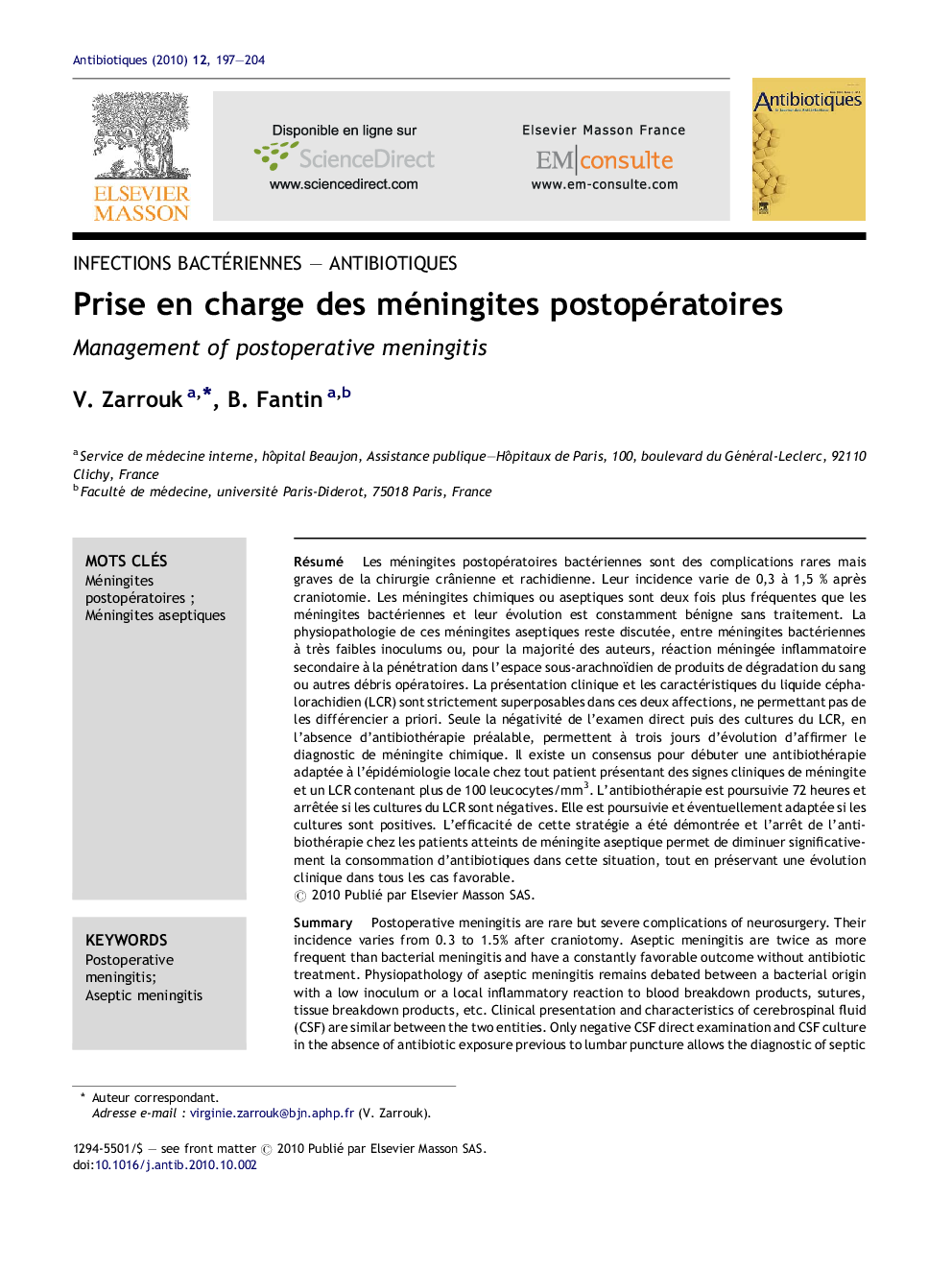| Article ID | Journal | Published Year | Pages | File Type |
|---|---|---|---|---|
| 3395971 | Antibiotiques | 2010 | 8 Pages |
Abstract
Postoperative meningitis are rare but severe complications of neurosurgery. Their incidence varies from 0.3 to 1.5% after craniotomy. Aseptic meningitis are twice as more frequent than bacterial meningitis and have a constantly favorable outcome without antibiotic treatment. Physiopathology of aseptic meningitis remains debated between a bacterial origin with a low inoculum or a local inflammatory reaction to blood breakdown products, sutures, tissue breakdown products, etc. Clinical presentation and characteristics of cerebrospinal fluid (CSF) are similar between the two entities. Only negative CSF direct examination and CSF culture in the absence of antibiotic exposure previous to lumbar puncture allows the diagnostic of septic meningitis. There now is a consensus to systematically treat with antibiotics according to local ecology any patient with symptoms suggestive of postoperative meningitis with a CSF yielding more than 100 leukocytes/mm3. Antibiotic should be stop after 72Â hours if CSF cultures remain sterile; if culture is positive, empirical treatment should be adapted accordingly. The efficiency of this approach was demonstrated in a prospective study and allowed a significant reduction in the duration of antibiotic treatment in patients with postoperative meningitis with a favorable clinical outcome.
Keywords
Related Topics
Health Sciences
Medicine and Dentistry
Infectious Diseases
Authors
V. Zarrouk, B. Fantin,
